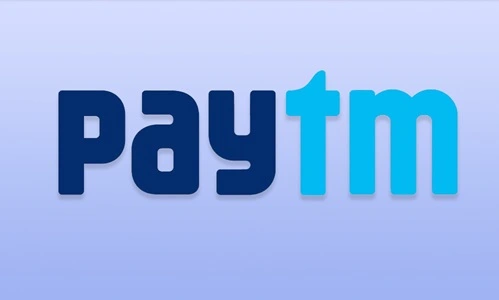Founded in 2010, Paytm is one of India’s leading digital payment and financial technology platforms. Operated by One97 Communications, Paytm has expanded from a mobile wallet service to an all-in-one platform, offering services like payments, e-commerce, banking, insurance, and financial products. It played a pivotal role in India’s digital transformation, particularly during the demonetization period in 2016. As of 2024, Paytm continues to evolve and maintain its foothold in the competitive fintech industry.

Current Overview of Paytm
Paytm has successfully established itself as a prominent player in India’s digital ecosystem, with over 450 million registered users and 82 million monthly active users. It caters to a broad customer base, including individuals, merchants, and businesses, through its digital payments, e-commerce, and financial services. The company has consistently diversified its offerings, expanding into sectors like insurance, mutual funds, and lending. Despite this growth, Paytm faces challenges like rising competition, profitability issues, and regulatory hurdles.
Strengths
1. Strong Brand Recognition: Paytm enjoys a strong reputation in India, becoming synonymous with digital payments and financial services. Its massive user base and strategic marketing campaigns have solidified its presence in urban and rural areas alike.
2. Widespread Merchant Adoption: Paytm’s QR-code payment system is widely accepted by merchants across India, from small vendors to large retailers, contributing to its dominance in the digital payments market.
3. Innovative Solutions: Paytm has been at the forefront of launching innovative products, such as Paytm Soundbox for merchants and Paytm Postpaid for users, allowing flexibility and convenience in payment options.
4. Diverse Service Offerings: Beyond digital payments, Paytm provides various financial services, including mobile recharges, utility bill payments, insurance, and investment products. This diversification reduces reliance on a single revenue stream and enhances user engagement.
5. Strategic Partnerships: Paytm has forged key partnerships with global players like SoftBank and Yahoo! Japan (for PayPay in Japan), as well as domestic collaborations with e-commerce and financial platforms, boosting its market presence.
Weaknesses
1. Profitability Challenges: Like many fintech startups, Paytm has faced difficulties in achieving consistent profitability. Despite its large user base and growing revenue, the company reported significant losses in recent years, raising concerns over its financial sustainability.
2. Over-Reliance on Promotions: Paytm heavily relies on cashback offers and promotions to attract and retain customers. While these tactics boost engagement, they strain the company’s financial resources and may not foster long-term customer loyalty.
3. Security Concerns: As a platform handling sensitive financial transactions, Paytm is vulnerable to fraud and cyberattacks. Though security measures are in place, any breach could severely impact the company’s reputation.
4. Dependence on Internet Connectivity: Paytm’s services depend heavily on internet access. In areas with poor connectivity, especially rural regions, the platform’s functionality is limited, posing a barrier to its adoption in such regions.
Opportunities
1. Untapped Rural Markets: With a significant portion of India’s population residing in rural areas, there is immense potential for Paytm to expand its services by offering tailored solutions for these regions, particularly as the Indian government pushes for financial inclusion.
2. Expansion of Financial Services: Paytm has the opportunity to further expand into areas such as lending, insurance, and investment products. By introducing more comprehensive financial solutions, it can tap into new markets and increase revenue streams.
3. International Expansion: With its experience in India, Paytm could replicate its success in other emerging markets where digital payments and fintech services are gaining traction.
4. Partnerships and Collaborations: Paytm can leverage strategic partnerships with companies in e-commerce, travel, and retail to drive user acquisition and increase transaction volumes.
5. Technological Advancements: Paytm can capitalize on new technologies such as blockchain and artificial intelligence to improve its security measures, enhance user experience, and introduce innovative payment solutions.
Threats
1. Intense Competition: The digital payments space in India is highly competitive, with players like Google Pay, PhonePe, and Amazon Pay offering similar services. Staying ahead in this competitive environment requires continuous innovation.
2. Regulatory Challenges: Paytm operates in a heavily regulated sector, and frequent changes in government policies regarding fintech and digital payments could affect its operations and growth. Compliance with these regulations also increases operational costs.
3. Security Risks: As a fintech company, Paytm faces constant threats from hackers and cybercriminals. Any breach in security could lead to financial losses, legal liabilities, and damage to its reputation.
4. Customer Retention: The heavy use of promotions and cashback to attract users may not guarantee long-term retention. As consumers become less responsive to promotions, Paytm will need to find new ways to maintain its customer base.
Conclusion
Paytm remains a dominant player in India’s fintech landscape, with a strong brand presence, vast user base, and diversified services. However, the company faces challenges such as profitability concerns, security risks, and growing competition. By expanding into untapped markets, strengthening its financial services offerings, and leveraging technological advancements, Paytm has the opportunity to further consolidate its position. To ensure long-term success, the company must focus on improving its profitability, maintaining customer trust, and staying ahead of competitors in the evolving digital payments industry.